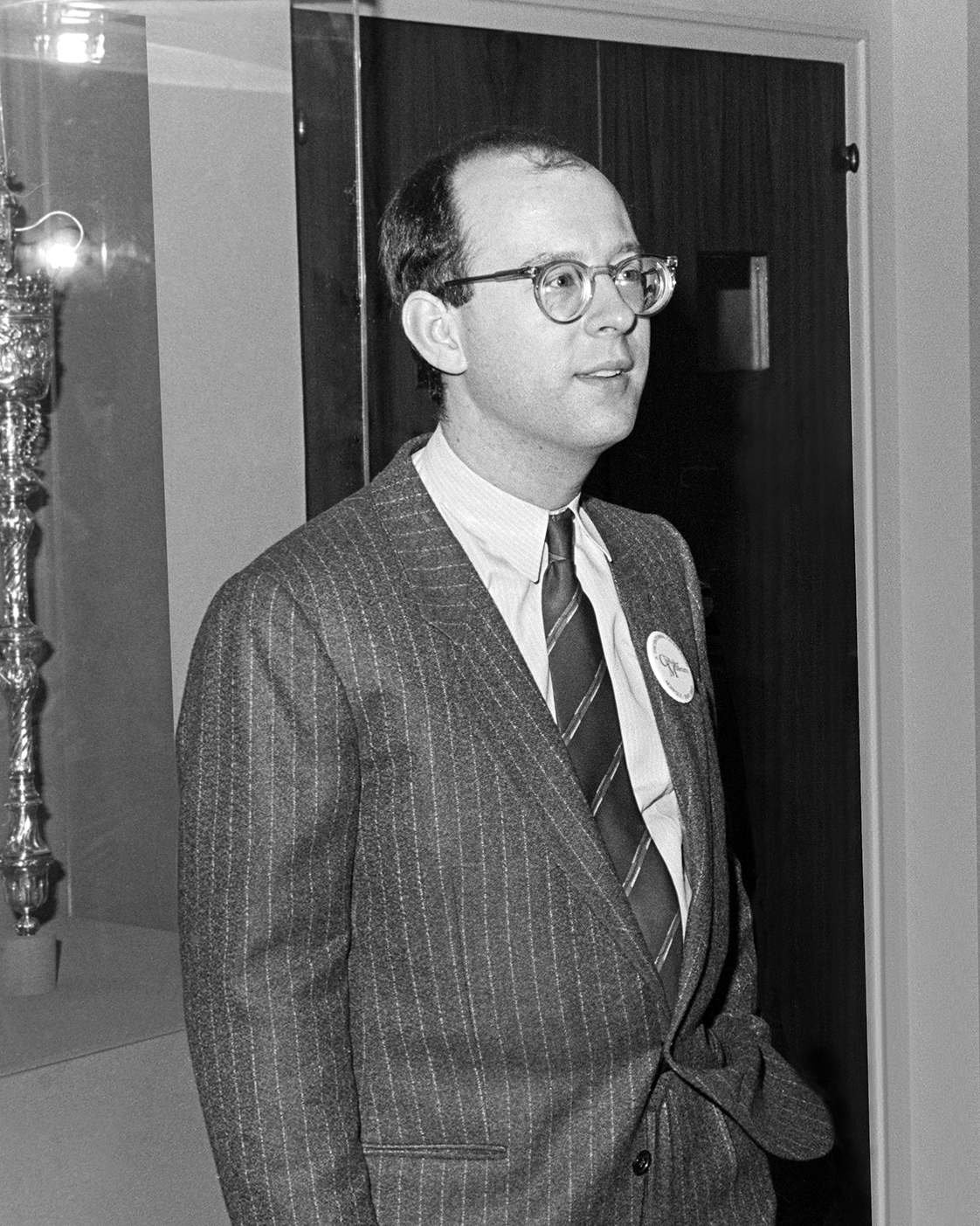- Open today, 10 am to 5 pm.
- Parking & Directions
- Free Admission
Thomas Sokolowski (1950–2020)
At the Chrysler Museum, we mourn the loss of Tom Sokolowski, an influential art professional and the co-founder of Visual AIDS—an organization established to support artists who are HIV positive. The long-time director of the Andy Warhol Museum in Pittsburgh was a curator of European art at the Chrysler Museum from 1982–1984. His career also included service as the director of both the Grey Art Gallery at New York University and the Zimmerli Art Museum at Rutgers University. Sokolowski had a distinguished career with many exhibitions to his credit and was especially noted for his leadership in responding to the HIV-AIDS epidemic.

Opening of the 19th Century French Gallery Reinstall, March 15, 1982. Tom Sokolowski (right) and unnamed visitor looking at The Daughters of Durand-Ruel by Renoir.
Sadly, I only met Tom Sokolowski in passing and we never spoke about his time in Norfolk. However, after reading the accounts of his career, I was curious to learn more about his time at the Chrysler. Through my own research and discussions with people who served alongside Sokolowski at the Chrysler, I learned that his accomplishments here were significant. Jeff Harrison, Chief Curator Emeritus; Catherine Wass, a deputy director during Sokolowski’s tenure; and Nancy Jacobsen, a former docent, all spoke of his energy, enthusiasm, and intelligence.

Tom Sokolowski and the Norfolk Mace.
Sokolowski came to the Chrysler from the Institute of Fine Arts, where he was an advanced graduate student focusing on Italian Baroque painting. When Sokolowski joined the Chrysler team, Museum director David Steadman was working to professionalize the institution and dispel the air of a wealthy man’s playground that seemed to exist in the early days after Walter P. Chrysler, Jr.’s donation in 1971. Photographs of Sokolowski retrieved from our archives by Museum Photographer Ed Pollard reveal a slim, prematurely balding man in a bold pinstripe suit with a fashionably thin tie. Sokolowski was openly gay and the Chrysler may have been perceived as a “gay-friendly” environment. Walter Chrysler’s homosexuality was an open secret and Mario Amaya, the director who preceded Steadman, was also gay.


Amaya organized photographer Robert Mapplethorpe’s first Museum exhibition at the Chrysler in 1978. Sokolowski’s most significant exhibition at the Chrysler, The Sailor 1930–1945: The Image of an American Demigod, followed in 1983 and featured works by Mapplethorpe. In reviewing the exhibition catalog, I was struck by the ambition of the project with more than fifty lenders and the depth of Sokolowski’s vision. He wove together traditional, heroic figures; bawdy, swaggering seaman; and edgier, homoerotic representations. Popular images from comics, movie musicals, recruitment posters, and advertising were also included in the mix. Eroticized compositions by Charles Demuth, Paul Cadmus, Bruce Weber, and Robert Mapplethorpe were juxtaposed with the comic and idealized visions of Reginald Marsh, Norman Rockwell, and many others. The project was imbued with complexity and contradiction for a fully post-modern expression of ideas. The homoerotic content was not coy but rather direct and honest. During the Reagan era and in a city that is home to the largest naval base in the world, this might have been considered a risky endeavor. The support of this exhibition and lack of controversy (to my knowledge) is a testament to the inclusive nature of this institution and this community.

Vija Celmins (American, b. Latvia, 1938), Strata, 1982, Colored mezzotint (print), Museum purchase, 84.179
Sokolowski was also instrumental in securing acquisitions and a reinstallation of the French painting collection. There were limited opportunities for purchase here in an era when the Museum was really trying to get its hands around the 25,000+ objects that Walter Chrysler had donated. However, three works on paper from his tenure caught my eye: a Joseph Cornell collage and prints by Richard Bosman and Vija Celmins. A conceptual print like the one by Celmins definitely went counter to the prevailing tastes of the collection committee at the time. Direct accounts indicate that Sokolowski’s enthusiasm for the image of stars against a night sky swayed the group. The acquisition is a valuable reminder that a forward-thinking curator can have a lasting impact on a collection. The Chrysler is fortunate to have enjoyed Tom Sokolowski’s zeal and commitment to the arts.
–Erik H. Neil, Director

